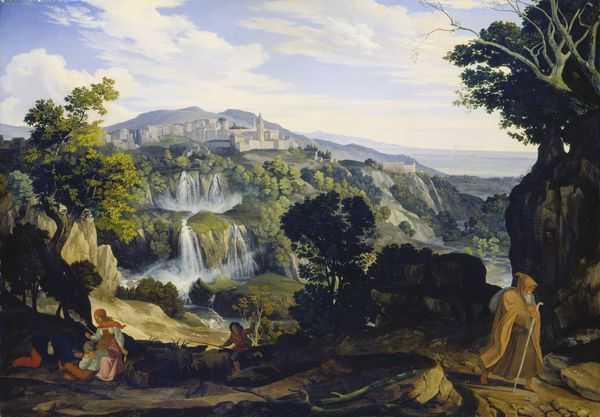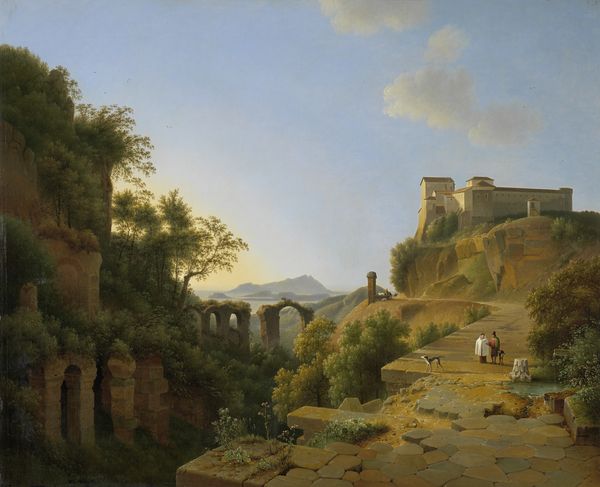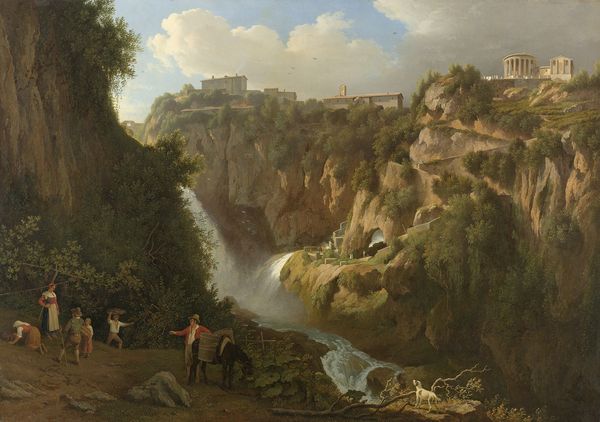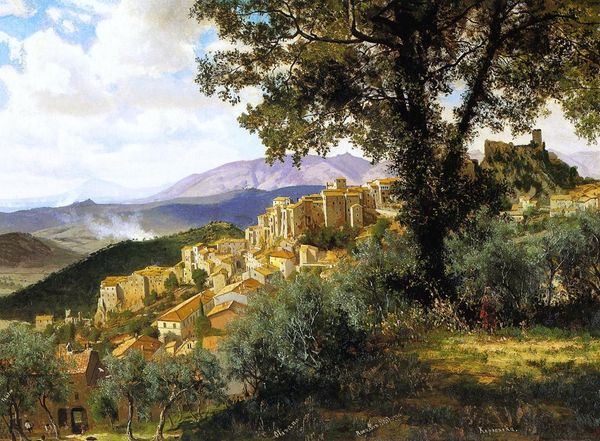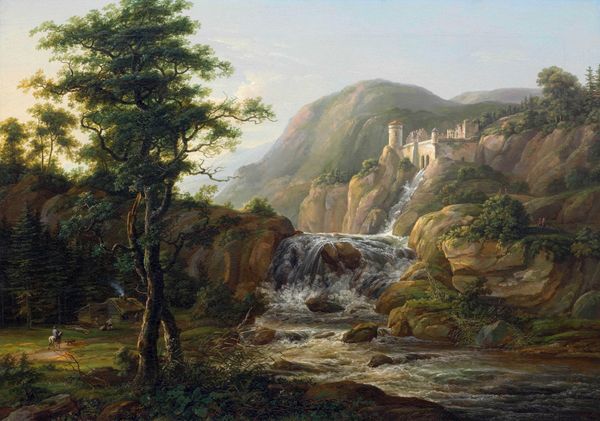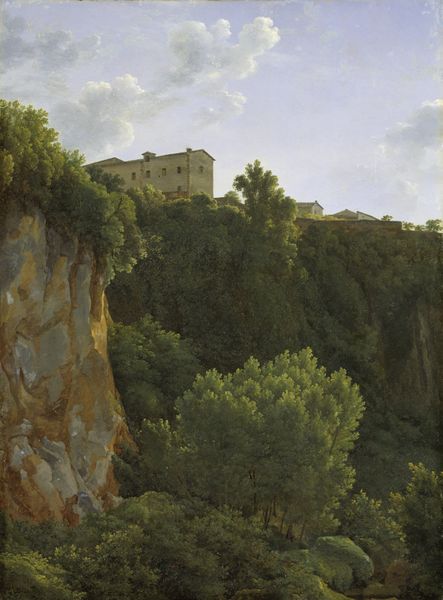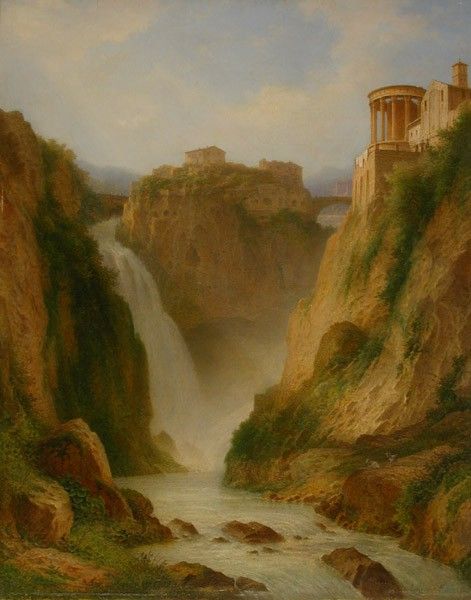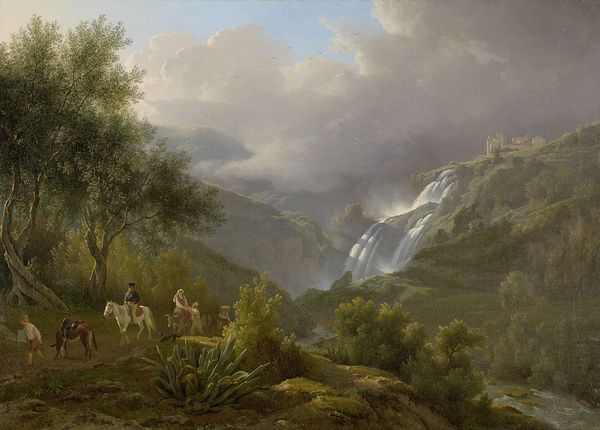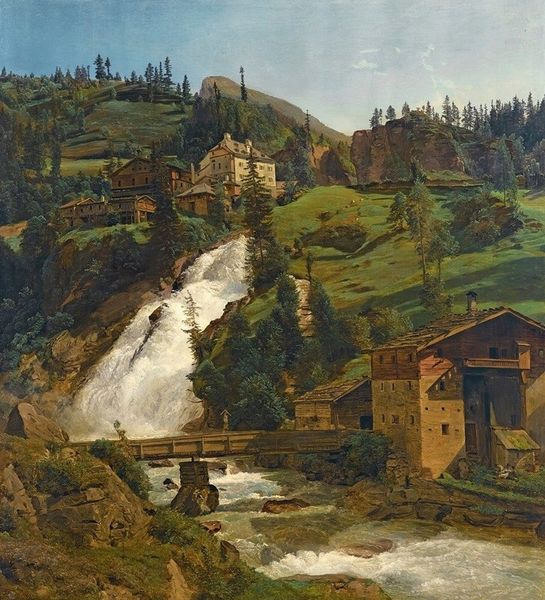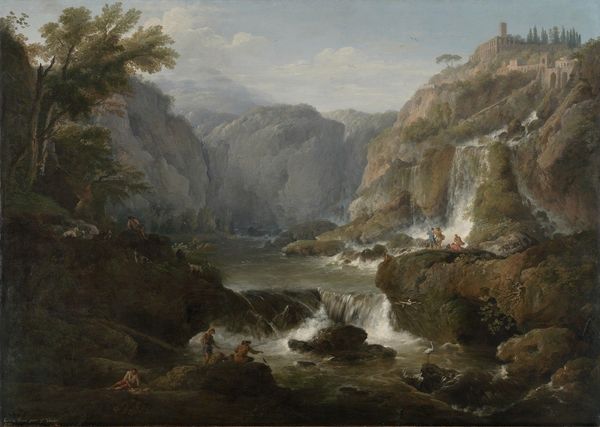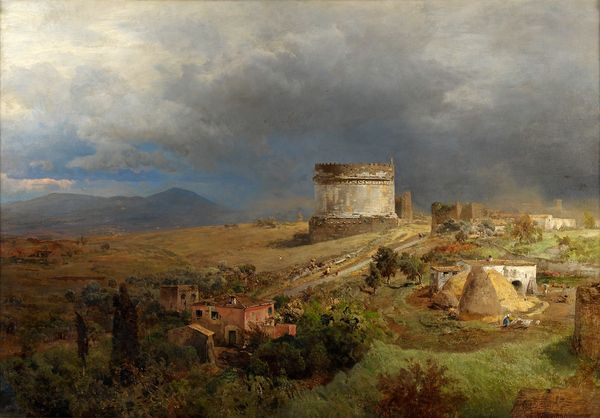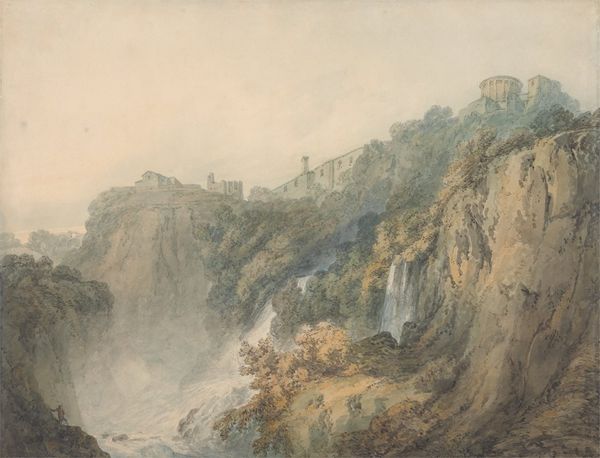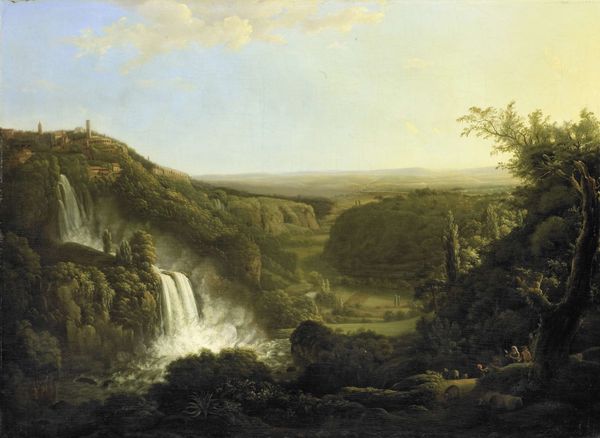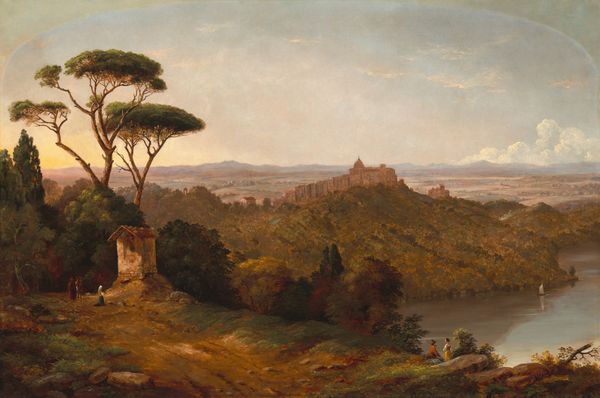
oil-paint, canvas
#
oil-paint
#
landscape
#
oil painting
#
canvas
#
romanticism
#
cityscape
Dimensions: 52.4 cm (height) x 74.5 cm (width) x 5.2 cm (depth) (Brutto), 40.6 cm (height) x 62.3 cm (width) (Netto)
Curator: Let's turn our attention to "View of Tivoli in Italy," an 1844 oil on canvas by Gustaf Wilhelm Palm, currently held at the SMK - Statens Museum for Kunst. Editor: It's so precise, almost photographically rendered. A bit idealized, perhaps? It's definitely trying to capture the sublimity of nature, but the composition feels very controlled. Curator: Absolutely. Palm was working within the Romantic tradition, which frequently sought that experience of awe through nature. And Tivoli, with its cascading waterfalls and ancient ruins, became a popular symbol for this particular quest. Waterfalls often signify purification or the constant flux of time, and those classical buildings represent a nostalgic link to a perceived Golden Age. Editor: It’s fascinating how he's built the city on top of that hill, practically barricading it, as if civilization itself is something separate from and in opposition to the natural world. Look at the texture, too—how deliberately he applies the paint to give the falls that foamy quality. What kind of brushes would have allowed for that level of detail? Curator: I think it points to a real desire to understand the divine through observing the terrestrial. Notice how the town sits elevated, its architecture reaching up, contrasting against the horizontal sprawl of the landscape below. And how the cool blues of the sky meet the green below, almost inviting a merging of heaven and earth. Editor: What interests me is the economy behind producing something like this. Palm wasn't just moved by the beautiful site; someone had to commission the canvas, grind and mix the oil paints, stretch the canvas... Painting was a trade and landscape paintings were certainly tradable objects. There’s this market demand that fueled his artistic drive. Curator: A critical lens to view creativity. Thank you for that consideration. To me, though, the painting reveals how the power of a landscape resides not only in its natural features but also in its long and complex entanglement with human memory, desire and spiritual seeking. Editor: Yes, the landscape as an intersection of both the visible labor and the projected symbol! Curator: I appreciate gaining a wider perspective and recognizing it through various different facets of its past creation. Editor: And I appreciate glimpsing your appreciation for a beautiful waterfall and historic city!
Comments
statensmuseumforkunst almost 2 years ago
⋮
While living in Rome in 1840-51 Gustaf Palm painted many oil studies en plein air, i.e. in front of his chosen subject, making a crucial contribution to the advance of Swedish art. The painting of the small Italian village of Tivoli is characteristic of his many Italian studies. It shows a panoramic view and has been executed with a freshness that reflects the immediacy of his interaction with the scene. When painting Italian landscape studies Danish artists favoured a close-cropped segment of nature and would only rarely include buildings in their landscapes. While in Rome Palm was closely affiliated with several Danish painters, including Frølich and Læssøe. Perhaps Læssøe was inspired by Palm when painting his view of Ariccia (top right). Frølich was with Palm in Subiaco when he painted his Landscape near Subiaco (far right) in the summer of 1847.
Join the conversation
Join millions of artists and users on Artera today and experience the ultimate creative platform.
